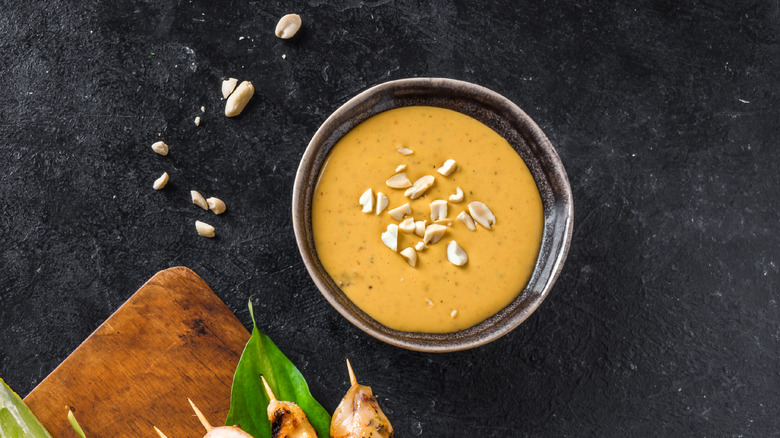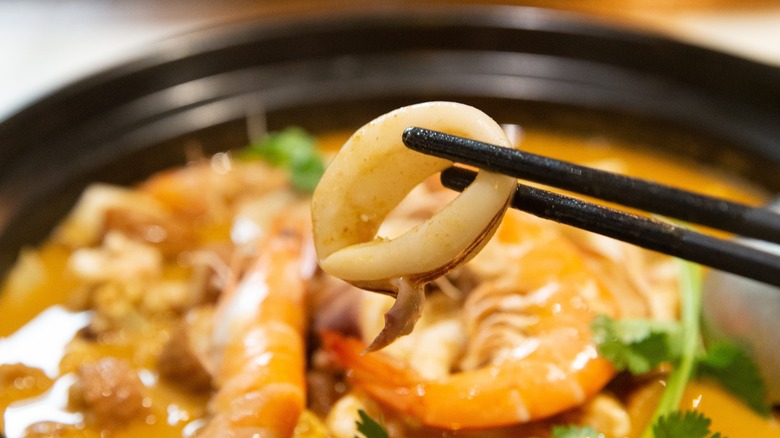The Sweet Difference Between Shacha And Satay Sauces
Food is like language — it evolves as it travels from place to place and incorporates new elements that are reflective of its local geography. A wonderful example of this is the metamorphosis of the Indonesian sauce satay to shacha, its Chinese adaptation. In this case, the transition is absolute; these two sauces may be historically related but bear no relation in the way they taste. Satay is sweet and shacha is savory.
When most people think of satay, they conjure up the nutty, thick, and lightly sweet peanut dipping sauce served in Asian restaurants to accompany skewered chicken. The flavors this sauce offers up are typical of its region of origin: lime, galangal, peanuts, and coconut milk.
Conversely, shacha is devoid of fruit and nuts and is instead rich in umami, being made primarily of shallots, garlic, and seafood. In addition, shacha's usefulness extends beyond being a dipping sauce: It goes in soups and marinades for roast meats.
Satay sauce is made with peanuts and sweeter ingredients
There are many versions of satay beyond the familiar peanut dipping sauce; some are made with soy sauce or pineapple and contain no coconut milk. In most of these concoctions, fruity and sweet elements like lime juice and sugar are constants. Origin theories tend to credit Muslim vendors on the island of Java with creating satay as a variation on Indian kebabs — a type of seasoned, grilled meat imported from the Middle East.
The new Javanese invention spread quickly throughout Indonesia, assuming a multitude of forms, and Portuguese explorers introduced the peanut to Indonesia in the 16th century, where the crop was quickly cultivated. When combined with indigenous flavors like lime and coconut, the delicacy known as chicken satay sauce was born. Since then, satay has spread even further, becoming a staple everywhere from the Philippines to the Netherlands — each with their own variation on seasoned, grilled meat served with a dipping sauce.
Shacha is the umami-rich descendant of satay
It's no surprise that satay made its way to China, where it was modified beyond recognition. Tradition holds that shacha originated in Chaozhou, a city in eastern China, as an adaptation of satay. You might see it described as a kind of barbecue sauce. For example, a popular Taiwanese brand for it is Bullhead Barbecue Sauce. Shacha actually translates to "sand tea sauce," an evocative, if not descriptive, moniker.
In contrast to satay sauce, shacha's prominent ingredient is seafood — usually brill and dried shrimp – rounded out with shallots, chiles, and oil. Needless to say, it's quite savory and packed with umami. Apart from marinades and soups, shacha is a favorite ingredient for stir-fries as well as dipping sauces for hot pot.
Just as with satay, it's entirely possible to make your own version of shacha at home, provided you're determined enough to track down specialized Asian ingredients like dried shrimp powder. Then, you can make a three-course meal describing culinary evolution: Mughal kebabs, chicken satay, and its accompanying sweet peanut sauce, or beef stir-fry and glass noodles enhanced with a robust shacha sauce — positively, the best way to internalize history.


